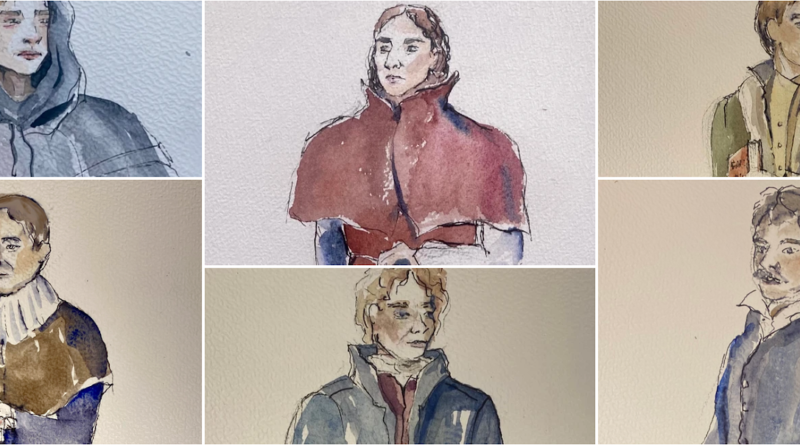Internationals, not outsiders
This exhibition takes place until the 2nd of June, in the University Library, as well as the Harmony, Duisenburg and Theology buildings. Take a look at the website for more information.
Groningen, being a charming city with prestigious academic institutions, attracts a diverse community of international students. However, underneath this welcoming exterior lies a harsher reality: international students struggle to fully integrate and feel at home in Groningen.
Recognising this problem, honours students Anna Bezpala, Michal Lyso, and artist Darynka Alieieva organized an exhibition within different academic buildings of Groningen. ‘Internationals, not outsiders’ sheds light on the journeys and contributions of international students throughout the history of Groningen.
The problem is rooted in the isolation that many internationals feel when they move to Groningen. The cultural differences, language barriers, possible homesickness and typically limited social networks can leave them lacking a sense of belonging and community, despite their lasting impact on both the lively inner-city and academic scene of Groningen.
“International students in Groningen should be considered an inherent part of the city; without them, Groningen would not be the same,” Anna says. “In the early years of the University, it relied on international students, because academic life for the Dutch was very centred in the south.” However, certain student associations and rental platforms appear to disagree, as many international students are still faced with discrimination. Michal considers it “outrageous”, and rightfully so.
“There is a very long history that backs us up here as internationals” – Anna Bezpala
The discrimination against international students based on them ‘not belonging here’, aside from being flat-out rude and offensive, is also completely misplaced. Not many people are aware of it, but as Anna informed me, internationals have been studying at the university of Groningen as long as anyone else; since its opening in 1614.
“Through the 17th century, in terms of students, RUG was 40 percent international, and in some places nearly all of the staff was international,” Anna says. “There is a very long history that backs us up here as internationals”.
The exhibition, funded by ESN and the Groningen University Fund, highlights this historical presence of international students in Groningen by integrating them into the present. This is realised by banners depicting life-sized artworks of these past students, created by the talented Darynka Alieieva.

The idea for the exhibition came from international communication student Anna, who was inspired by a course she followed over the summer, encouraging students to find the backstory of everyday objects and integrate them into the present; “When you walk down the hallway as a student right now, you could be walking past a student from the same country, that studied at the same campus but years and years ago”. In a way, it creates a tangible link between the past and the present.
With this, the exhibition aims to foster a sense of unity among the current generation of international students in Groningen, and perhaps works as a reminder that they’re not alone on their journey. “That’s what the banners are supposed to do,” says Anna, “inspire a feeling of belonging, or at least continuity.”
The banners feature a small text bubble that serves as an introduction to the student on the banner. When a passer-by is interested, they can scan a QR code to be sent to the website. There, they can read about the challenges faced by their predecessors, as well as their achievements, and perhaps gain a better understanding of Groningen’s international heritage. It’s a testament to the resilience and talent of these international students.
For the project, a lot of research had to be done. Michal, history student and lead researcher, explains his process: “I started by researching the history of the university in general, and then used sources such as the album studiosorum Groningen and the yearbooks of the university, which I found in the study archives”. Using a combination of these sources, the internet, and even the alumni records on LinkedIn, Michal and Anna were able to reconstruct the stories of seven historical international students.
The students on the banners span different centuries, except for the 20th. During that time period, certain privacy regulations came into play. These regulations stated that consent was needed if the student died less than 70 years ago, or if they were still alive. “I reached out to such people, but unfortunately they did not reply”, says Anna. “As we were nearing the deadline, we had no other choice but to leave the 20th century out. But on our website we dedicated a page to them and acknowledged the women who came to study during that time.”

Groningen’s history is intertwined with the stories of international students who came to study here. Despite that, some students feel disconnected from the city and its locals. ‘Internationals, not outsiders’ aims to change that by celebrating the historical presence of international students. It serves as a reminder that internationals are not alone in the challenges they face, and that their stories are part of a narrative reaching back as far as the opening of the university itself.

